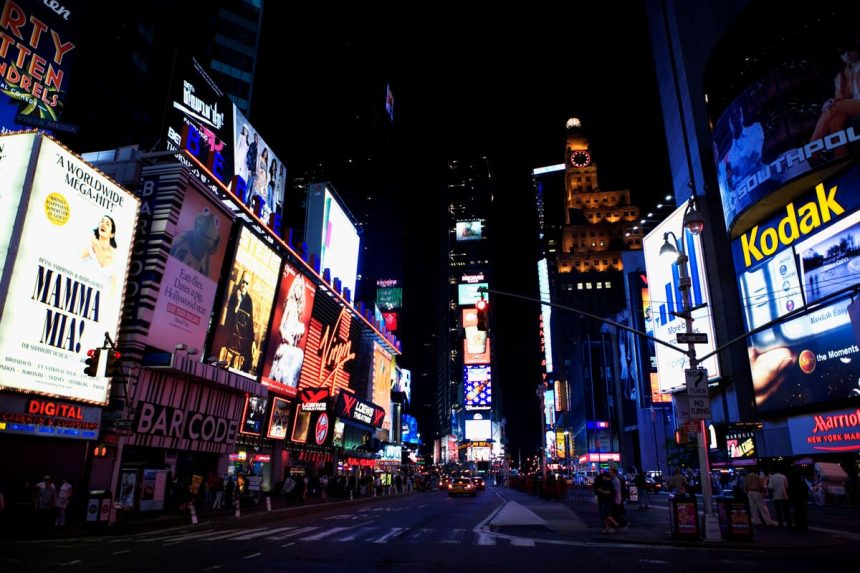Srikanth Ramachandran is the Founder and Group CEO of Moving Walls Group, an enterprise SaaS leader for the OOH media industry.
Imagine for a moment that you’re a performer on a grand stage, about to deliver your message to a captive audience. You’ve rehearsed your craft tirelessly, honing your delivery to perfection. But as the lights turn on in the arena, you notice that the majority of the seats are empty. Your message, however powerful, is not reaching its intended audience.
This continues to be the major marketing challenge as consumer attention spans dip and get spread across multiple digital platforms, channels and even devices. The average internet user bounces between roughly seven different social platforms per month, according to the Digital 2023: Global Overview Report. This is before considering the time spent on streaming platforms, where the average user spends more than 1.5 hours per day watching online TV.
The giant advertising platforms are adapting to this fluid situation by increasingly focusing on their omnichannel capabilities. These platforms basically help marketers automate reach and connect to data platforms that enable addressable audience discovery.
Digital’s Final Frontier: The Real World
So consumer attention is spread thin across several digital platforms. And the competition to reach these audiences online remains high. But what about when these users are not online? One interesting insight from the Digital 2023 Report is that the average time spent by a user on the internet dropped by close to 5%. From my perspective, this can likely be attributed to the freeing of travel restrictions and the general return to physical offices that has been happening globally.
This time spent outside the home is an important consumer engagement opportunity, especially for digital brands that don’t have a physical presence. Digital out-of-home (known as “DOOH”) media is enabling advertising platforms to automate reach here as well. However, being the founder of an OOH media technology solution, I’ve seen that providing addressable audiences is not as straightforward as in digital advertising.
Digital screens are part of just about every venue type—where audiences work, work out, live, travel, shop and so on. Every major advertising platform now supports DOOH inventory. According to WARC (paywall), DOOH is expected to be the fastest-growing media channel in 2023 globally in terms of ad spending.
Going Beyond DOOH Automation
It’s early days for DOOH automation, and it is largely treated as another video channel. However, DOOH is a unique medium that presents ads in public spaces, and the impressions it generates can vary depending on several variable factors, such as time of day, location, audience behavior and even the weather.
When DOOH is bought programmatically, the cost per thousand impressions becomes the currency to buy and sell. This also means that impressions need to be standardized in order to accurately measure the effectiveness of the campaign. But this is easier said than done.
Even in advanced DOOH markets where common OOH measurement currencies exist, they do not yet cover emerging venue types. In markets where DOOH inventory is growing fast, the impression measurement is largely based on manual historical estimates of traffic or footfall. This makes it difficult for marketers to plan or estimate reach across inventory from different media owners.
DOOH stakeholders can learn from the issues faced by other channels around reach and impression inflation, which can erode advertiser trust.
Leveraging DOOH Differently For Better Results
While programmatic advertising has put DOOH media on the omnichannel table, marketers have to look at this medium differently to gain from its benefits. The first basic step is for buy- and sell-side stakeholders to collaborate on impression measurement standards. This will ensure that planning and measurement are possible across different types of inventory, thus enabling fairer allocation of budgets.
Beyond just automation, it is important for marketers to make use of DOOH’s physical characteristics to make a greater impact. For example, while audience targeting would be hygiene for online advertising, marketers can look at relevant nearby points of interest to identify the right screens to run their ads on. There are also other contextual signals, such as current weather, traffic conditions, time of day and more, that can be used to show a more relevant creative.
DOOH media presents an opportunity for marketers to extend their reach and grow engagement in a privacy-safe and non-disruptive manner. The advertising technology world is embracing this, and common measurement standards will be key to executing efficient campaigns. This is a whole new stage for marketers, and they have a whole lot of tools to help them make a greater impact.
Forbes Business Council is the foremost growth and networking organization for business owners and leaders. Do I qualify?
Read the full article here


